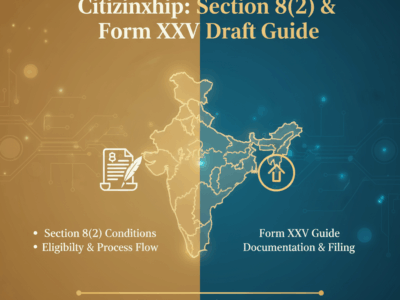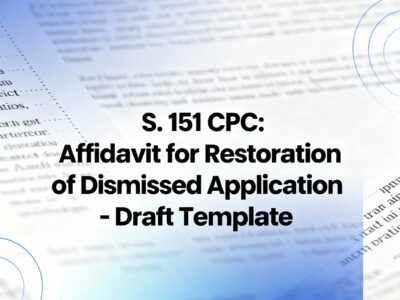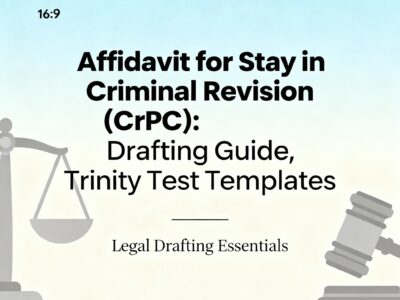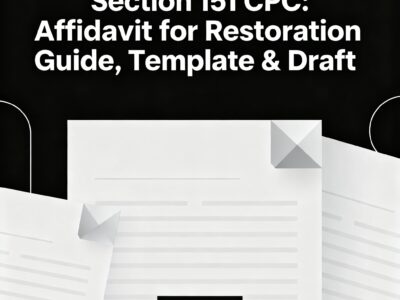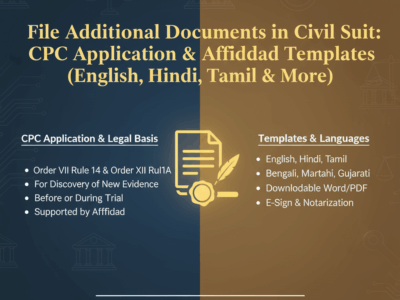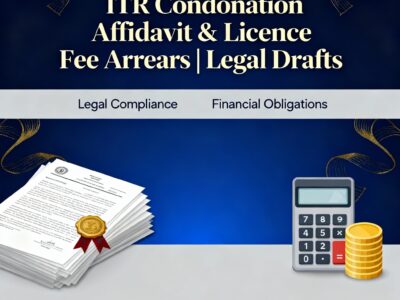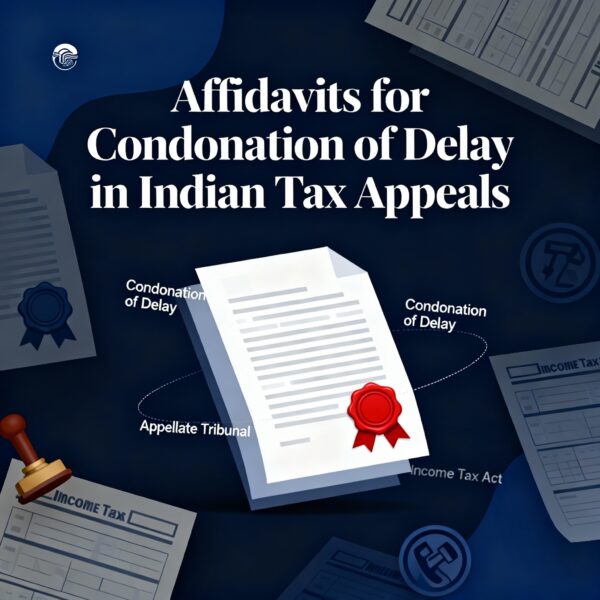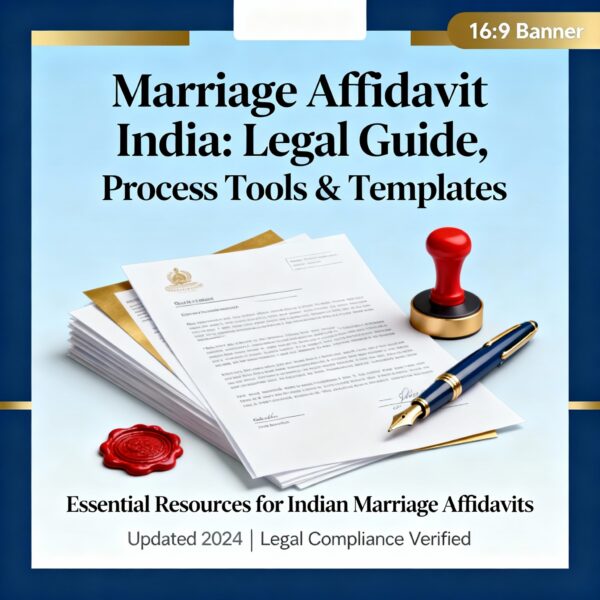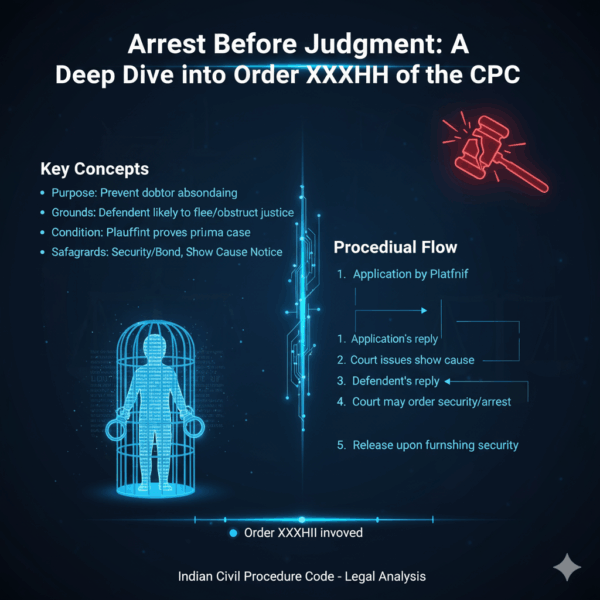Learn the Karta substitution procedure for an HUF. Get free legal templates for affidavits, NOCs, & indemnity bonds to change a Karta after death or by consent.
Introduction (Topic Context): Changing the Karta of a Hindu Undivided Family (HUF) is a critical legal and procedural step that most families face. Whether due to the unfortunate death of the incumbent Karta, a voluntary resignation, or a unanimous decision by consent to appoint a new manager (including a female Karta), the process requires precise documentation.
This comprehensive guide provides a detailed breakdown of the Karta substitution procedure under Indian law. It includes a complete procedural report, a post-substitution checklist for updating your HUF PAN card and bank accounts, and a full set of annotated legal templates, including the essential affidavit for substitution of Karta, No-Objection Certificates (NOC), and bank-ready indemnity bonds.
A Comprehensive Legal and Procedural Report on the Substitution of Karta in a Hindu Undivided Family (HUF)
By The Evaakil.com Legal Team | Last Updated: October 28, 2025
PART I: THE LEGAL ARCHITECTURE OF THE KARTA AND HINDU UNDIVIDED FAMILY (HUF)
I.A: Defining the Hindu Undivided Family (HUF) and Coparcenary
A Hindu Undivided Family (HUF) is a unique legal and social institution recognized under Hindu Law. It is comprised of all lineal descendants of a common ancestor, along with their wives and unmarried daughters. The governance of an HUF is dictated by the specific school of Hindu Law applicable. In India, this is predominantly the Mitakshara school, which applies throughout the country, with the exception of Assam, Bengal, and Tripura, where the Dayabhaga school is prevalent. This report will focus on the principles of the Mitakshara school.
HUF Structure at a Glance
(All Lineal Descendants + Wives + Unmarried Daughters)
(Those with Right by Birth: Sons, Grandsons, Great-Grandsons, and now Daughters)
(Manager)
(e.g., Wives)
Within the broader structure of the HUF, there exists a narrower body of individuals known as the "coparcenary". A coparcenary includes only those persons who acquire an interest in the joint or coparcenary property by virtue of their birth into the family. Traditionally, this was limited to the sons, grandsons, and great-grandsons of the holder of the joint property. As will be discussed, this definition has been fundamentally altered by legislative amendments.
The HUF is recognized as a separate entity for legal and taxation purposes. It possesses a continuous legal existence. The death of any single member, including the Karta, does not, by itself, cause a *de jure* dissolution of the family unit. The entity continues with its "perpetual succession". This principle is the foundation for the concept of *substitution* rather than dissolution; the family continues, and only its manager is replaced.
I.B: Legal Position of the Karta: Powers, Limitations, and Fiduciary Nature
The Karta is the head or manager of the Hindu Undivided Family. By convention and law, this position is typically held by the senior-most male member of the family. The Karta's position is not "elective" but is acquired by virtue of his seniority.
The Karta's Core Powers
Management
Absolute control of assets & business.
Income & Expenditure
Allots funds, manages income.
Legal Representation
Represents HUF in all legal matters.
Alienation
Can sell/mortgage for "legal necessity".
The powers vested in the Karta are extensive and, in terms of management, are considered "absolute".
The powers vested in the Karta are extensive and, in terms of management, are considered "absolute". These powers include:
- Power of Management: The Karta has absolute control over the management of the family's assets, business, and financial matters. He can make decisions regarding investments, asset management, and business expansion.
- Right to Income and Expenditure: All income from the joint family property must be handed over to the Karta. It is his prerogative to allot funds to members for their maintenance and other needs.
- Legal Representation: The Karta represents the HUF in all legal, social, and religious matters. He can file suits, defend the family's interests, and enter into compromises or refer disputes to arbitration on behalf of the family.
- Power of Alienation: The Karta's most significant power is the ability to alienate (i.e., sell, mortgage, or otherwise transfer) joint family property. This power is, however, conditional. It can only be exercised for "legal necessity" (e.g., payment of family debts, marriage expenses of coparceners, or for pressing family needs) or for the "benefit of the estate". If a valid legal necessity is proven, the Karta does not require the consent of the other coparceners to execute the alienation, and such a transfer is binding on all members. This principle was established as early as 1856 in *Hunooman Persaud Panday v. Mussumat Babooee Munraj Koonweree*. Conversely, an alienation made without legal necessity and without the consent of other coparceners is illegal, null, and void to the extent of the other coparceners' shares.
Despite these vast powers, the Karta's legal position is paradoxical. His role is described as fiduciary, meaning he must act for the "greater good of the family". However, he is explicitly *not* considered an agent or a trustee of the family. This distinction is critical: unlike a trustee, the Karta is not strictly accountable to the other members for his management, or even mismanagement, of the family property. He is not bound to economize or save, and his decisions regarding expenditure cannot be questioned by other members.
This lack of direct accountability means that coparceners cannot "fire" a Karta for poor performance or negligence. The only remedy available to a coparcener who is dissatisfied with the Karta's management is to demand a partition of the HUF property. This legal reality profoundly shapes the mechanisms for substitution. Since a Karta cannot be removed for performance, his substitution must be predicated on objective events (death), a voluntary act (resignation), or the unanimous will of all coparceners (consent).
I.C: The Modern Coparcenary: Impact of the Hindu Succession (Amendment) Act, 2005
The traditional structure of the Mitakshara coparcenary was fundamentally revolutionized by the Hindu Succession (Amendment) Act, 2005 (Act 39 of 2005), which has been described as a "turning point" in eradicating gender bias. This Act substituted the original Section 6 of the Hindu Succession Act, 1956.
The 2005 Amendment: A Landmark Change
The core change introduced by the 2005 Amendment is that it grants daughters of a coparcener the *same rights* in the coparcenary property as if she had been a son. This right is acquired "by birth".
The Supreme Court of India, in the landmark judgment of *Vineeta Sharma v. Rakesh Sharma & Others* (2020), clarified that this right is retrospective. It applies to all daughters of coparceners, regardless of whether their father was alive on September 9, 2005, the date the amendment came into force.
This legislative change has a direct and profound impact on the position of Karta. The primary legal qualification for becoming a Karta is that the individual must be a *coparcener* of the HUF. Before the 2005 Amendment, women were considered "members" of the HUF but not "coparceners". This distinction legally barred them from the managership, a principle affirmed in cases like *CIT v. Seth Govindram Sugar Mills*.
By elevating daughters to the status of coparceners by birth, the 2005 Amendment legally enables them to hold the position of Karta. The senior-most coparcener in an HUF can now legally be a female. While the law is clear, practical implementation often lags. Financial institutions and government bodies, accustomed to the traditional patriarchal structure, may exhibit confusion or require additional documentation. This has led to the necessity of a specific "Self Declaration by Female Karta," a document that assertively states her legal right to the position based on the 2005 Act.
PART II: GROUNDS AND LEGAL PRECONDITIONS FOR SUBSTITUTION OF KARTA
How is a Karta Substituted?
Event Triggering Substitution
(e.g., Death, Resignation, Incapacity)
1. Death of Karta
The most common scenario.
Automatic Succession
Position passes to the *senior-most* coparcener (male or female).
2. Resignation of Karta
Voluntary act by the Karta.
Formal Relinquishment
Karta executes a Deed of Relinquishment.
3. Special Circumstances
(e.g., Incapacity, Appointing a junior member)
Unanimous Agreement
*All* coparceners must consent to appoint a new Karta.
II.A: Substitution by Demise: The Automatic Succession Principle
The most common and legally straightforward scenario for substitution is the death of the incumbent Karta. In this event, the position of Karta passes *automatically* to the next senior-most *coparcener* of the family. This succession is a matter of law; it is not an "appointment" and requires no formal "procedure" or election by the other members.
The legal documentation required, such as an affidavit, is not for the purpose of *appointing* the new Karta. Rather, its purpose is to create a formal record of the *fact* of the substitution and to *inform* third-party entities (such as banks, tax authorities, and land registries) of the change in management.
The determination of "senior-most" is based on age, not generation. Consequently, an elder nephew from a senior branch of the family may succeed as Karta before a younger uncle. Following the 2005 Amendment, this principle of seniority applies equally to male and female coparceners. Therefore, if the eldest daughter is the senior-most coparcener by age, she will automatically succeed as Karta over her younger brothers.
II.B: Substitution by Resignation or Relinquishment: The Process of Voluntary Waiver
The position of Karta, while acquired by seniority, is not indefeasible. It is "terminable" by the Karta's own voluntary act of resignation or relinquishment. A Karta who is aged, in poor health, or otherwise unwilling to continue his managerial duties can relinquish the position.
This act should be formalized to be legally effective, particularly for notifying third parties. The most appropriate instrument for this is a Deed of Relinquishment of Kartaship. This document is executed by the outgoing Karta (the "Releasor") and clearly states his intention to waive his managerial rights in favor of another coparcener (the "Releasee").
It is critical to distinguish this act from the more common relinquishment of a property share. A Karta can resign his *managerial role* (Kartaship) without surrendering his *undivided share* in the HUF property. A legal template for such a deed must be drafted with precision to ensure it only transfers the *office* of the Karta and does not unintentionally disinherit the outgoing Karta from his property rights.
II.C: Substitution by Agreement: Appointing a Junior or Female Coparcener as Karta
The rule of seniority, while the default, is not rigid and can be superseded by unanimous agreement. A junior coparcener may be appointed as the Karta *if all other coparceners consent* to this arrangement. The Karta, in this instance, "takes his position by consent or agreement of all the coparceners".
This consent mechanism is a powerful and flexible legal tool that provides a non-litigious solution to various complex family situations. For example:
- If the senior-most coparcener is a non-resident Indian (NRI) and cannot manage the family's local affairs, the coparceners can unanimously appoint a resident junior member.
- If the senior-most coparcener is a daughter who does not wish to take on the managerial duties, she can consent along with all other coparceners to appoint her junior brother.
- As discussed below, this consent mechanism is the most effective solution for dealing with an incapacitated Karta.
The key legal requirement is *unanimity*. The documentation for this (a Declaration and No-Objection Certificate) must be signed by *all* adult coparceners to be valid.
II.D: Substitution on Grounds of Incapacity, Unsoundness of Mind, or Absence
This scenario presents a significant legal grey area, with sources presenting contradictory principles. On one hand, the law states that seniority by age is the *only* criterion, not mental or physical capability. Under this strict interpretation, an "aged patriarch with failing physical health will continue to be the Karta... till his death".
However, other legal commentaries state that a Karta must be "fit to act," of "sound mind," and not suffering from a "physical or mental deficiency" to qualify for the position.
These positions are reconciled in practice. There is no *automatic* substitution for incapacity. The senior Karta continues his legal role by default, even if he is incapacitated. To *involuntarily* remove him, a coparcener would be forced to file a suit, seeking a court declaration that the Karta is of unsound mind (similar to proceedings under the Guardians and Wards Act, 1890) and is therefore disqualified. This path is adversarial, expensive, and destructive to family harmony.
A Practical Solution for Incapacity
The practical, non-litigious, and legally sound solution is to *not* focus on the incapacity. Instead, the family should utilize the consent mechanism detailed in Part II.C. The remaining adult coparceners can convene and *unanimously agree* to appoint a junior coparcener as the new, acting Karta. This new Karta's authority is then documented in a "Declaration by all Coparceners," which bypasses the need to legally or medically prove the senior Karta's incapacity.
Table 1: Karta Substitution Scenarios: Legal Basis & Required Documents
| Scenario | Legal Basis | Key Challenge | Core Document(s) Required |
|---|---|---|---|
| 1. Death of Karta | Automatic succession by seniority. | Informing third parties (banks, tax dept.) of the *fait accompli*. | - Affidavit-cum-Declaration (Template 1) - Notarized Death Certificate. |
| 2. Resignation of Karta | Voluntary relinquishment of office. | Formality; Proving the waiver of rights to third parties. | - Deed of Relinquishment of Kartaship (Template 3) - Declaration by all Coparceners (Template 2). |
| 3. Appointing a Junior / Female Karta (by Consent) | Unanimous agreement of all coparceners. | Achieving 100% unanimity; Institutional acceptance of a non-senior Karta. | - Declaration & NOC by all Coparceners (Template 2) - Self-Declaration by Female Karta (Template 4), if applicable. |
| 4. Incapacity of Karta (Unsound Mind / Ill-Health) | Legal grey area. | No automatic substitution; High risk of litigation if removal is involuntary. | - (Recommended Solution) Use Scenario 3. A Declaration & NOC by all Coparceners (Template 2) is the non-litigious path. |
PART III: THE PROCEDURAL DOSSIER: EFFECTING THE SUBSTITUTION
The substitution of a Karta is not effected by a single document. It requires a *dossier* of legal instruments tailored to satisfy the requirements of various government and financial institutions.
III.A: The Core Legal Instruments: Declarations, Affidavits, and No-Objection Certificates
While often used interchangeably, these three documents serve distinct legal purposes, though they are frequently combined into a single instrument.
- Affidavit: This is a sworn statement of facts made by a deponent and attested by a Notary Public or a First Class Magistrate. In an HUF substitution, it is used to formally state the facts of the previous Karta's death and to provide a verified list of all surviving coparceners and members.
- Declaration: This is a formal statement (not necessarily sworn) by *all* coparceners. Its purpose is to *declare* that the new Karta (whether by seniority or consent) has been appointed and is authorized to manage the HUF's affairs. This is the primary document used to establish *consent* when appointing a junior Karta.
- No-Objection Certificate (NOC): This is a specific instrument demanded by banks and financial institutions. In it, all other coparceners affirmatively state that they have "no objection" to the new Karta being registered as the sole signatory and operator of the HUF's accounts.
III.B: The Indemnity Requirement: Securing Third Parties from Liability
An Indemnity Bond is a non-negotiable document required by almost all financial institutions (banks, mutual funds, depositories) before they will effect a change of Karta.
This legal instrument is designed to protect the institution from liability. A bank, for instance, is a third party to the HUF's internal affairs. If it accepts a new Karta based on the family's declaration, it faces a legal risk: an estranged or unknown coparcener could later emerge and sue the bank, claiming that *he* was the rightful Karta and the bank acted improperly.
The Indemnity Bond neutralizes this risk. In this document, all surviving coparceners "jointly and severally" agree to indemnify the bank, its successors, and its agents, and to keep them "safe and saved harmless" against all future losses, claims, actions, or damages that may arise from the bank acting on their request to change the Karta. This bond must be executed on non-judicial stamp paper and is often required to be supported by two independent sureties or guarantors.
III.C: Procedural Checklist for Institutional Notification
Once the core legal dossier is prepared, it must be submitted to all relevant authorities to formally record the change in the HUF's management. The primary entities to notify are:
- Income Tax Department: To update the Karta's name associated with the HUF's Permanent Account Number (PAN).
- Banks and Financial Institutions: To change the authorized signatory and Karta for all HUF bank accounts.
- Demat Depositories (NSDL/CDSL) and Mutual Funds: To transmit securities and folios from the deceased Karta to the new Karta.
- Sub-Registrar of Assurances / Municipal Corporation: To mutate land and property records, updating the Karta's name on the title deeds.
PART IV: ANNOTATED LEGAL TEMPLATES AND DRAFTING GUIDE
Find the exact document you need. Select a scenario to filter the templates below.
IV.A: Master Template 1: Affidavit-cum-Declaration for Substitution of Karta (Consequent to Death)
IV.B: Master Template 2: Declaration and No-Objection Certificate (NOC) by all Coparceners for Appointment of a New Karta (By Consent)
IV.C: Master Template 3: Deed of Relinquishment of Kartaship
IV.D: Master Template 4: Self-Declaration by Female Karta
IV.E: Master Template 5: Indemnity Bond for Substitution of Karta
IV.F: Drafting Notes: Critical Clauses, Attestation, and Stamp Duty Requirements
- Stamp Duty: All Affidavits (Template 1) and Indemnity Bonds (Template 5) *must* be executed on non-judicial stamp paper of the value prescribed by the Stamp Act of the respective state. A Deed of Relinquishment (Template 3) will attract a different, often higher, stamp duty.
- Attestation: Affidavits and Indemnity Bonds must be sworn before and attested by a Notary Public or a First Class Magistrate to have legal validity.
- Registration: A Deed of Relinquishment (Template 3), as it relates to the *office* of managing immovable property, should be registered with the Sub-Registrar of Assurances to be binding. Declarations (Template 2) and Affidavits (Template 1) generally do not require registration.
- HUF Seal: All documents executed on behalf of the HUF by the new Karta should bear the HUF's rubber stamp (seal).
- Coparcener Signatures: For any substitution by consent (Template 2), it is imperative that *all* living adult coparceners (including all daughters) sign the document. Failure to obtain unanimous consent can invalidate the appointment.
PART V: POST-SUBSTITUTION LEGAL AND FINANCIAL INTEGRATION
Executing the legal dossier is the first step. The second is to use it to update all official records.
Post-Substitution Procedural Checklist
1. Income Tax Department
File "Changes or Correction in PAN Data" form to update the Karta's name on the HUF's *existing* PAN.
2. Banks & Financial Institutions
Submit the full dossier (Affidavit, NOC, Indemnity Bond) to change the authorized signatory on all HUF accounts.
3. Demat Depositories (NSDL/CDSL)
Submit a "Transmission Request Form" along with the legal dossier to transfer securities and folios to the new Karta's name (as Karta).
4. Property Registries
File an application for "Mutation" at the local Sub-Registrar's office or Municipal Corporation to update the Karta's name on property records.
V.A: Detailed Procedure: Updating HUF PAN and Income Tax Records
The HUF possesses its own unique PAN. The Karta's name is a key data field in the PAN record. Upon substitution, this *must* be updated.
The correct procedure is not to apply for a new PAN for the HUF. Doing so is illegal. The correct procedure is to file a "Request for New PAN Card or/and Changes or Correction in PAN Data" form.
Procedural Steps:- Obtain the "Changes/Correction" Form (this is not Form 49A, which is for new applications).
- Fill the form with the HUF's existing PAN at the top.
- Tick the box corresponding to the "Change in Karta details."
- The form must be signed by the *new* Karta, in his/her capacity as Karta.
- Critical Note: The applicant is the HUF, represented by the new Karta. The "Representative Assessee" field should *not* be filled out as if the new Karta is representing the *deceased*.
- Submit the form with the following attachments:
- Master Template 1 (Affidavit-cum-Declaration), notarized, listing all coparceners.
- Proof of Identity and Address of the *new* Karta (e.g., Aadhaar, Passport).
- A notarized copy of the Death Certificate of the previous Karta.
- A copy of the existing HUF PAN card.
V.B: Detailed Procedure: Mutating Property Records and Land Registry
If the HUF owns immovable property (land, buildings), the Karta's name is typically recorded in the municipal or revenue records. This must be updated through a process called "Mutation".
It is essential to distinguish this from partition. Mutation *continues* the HUF's ownership under a new manager. Partition *dissolves* the HUF and divides the property. For substitution, the application is for mutation.
Procedural Steps:- File an application for mutation at the local Sub-Registrar's office or municipal corporation where the property is located.
- The application must be accompanied by the following documents:
- Master Template 1 (Affidavit-cum-Declaration), notarized.
- Original Death Certificate of the deceased Karta.
- Original Title Deeds of the property (e.g., Sale Deed).
- Proof of Identity and Address of the new Karta.
- Latest property tax payment receipts.
V.C: Detailed Procedure: Modifying Bank Mandates, Demat Accounts, and Financial Instruments
This is often the most documentation-intensive process, as financial institutions are highly cautious. The dossier required by banks, mutual funds, and depositories (NSDL/CDSL) is extensive.
Procedural Steps:- Contact each financial institution to obtain their specific internal "Change of Karta Form" or "Transmission Request Form".
- Prepare a complete dossier for *each* institution, which will typically include:
- The institution's specific form.
- Master Template 1 (if by death) OR Master Template 2 (if by consent).
- Master Template 5 (Indemnity Bond), notarized on stamp paper. This is almost always mandatory.
- Master Template 4 (Female Karta Declaration), if applicable.
- A notarized copy of the Death Certificate.
- PAN and KYC documents (e.g., Aadhaar) of the *new* Karta.
- PAN and KYC documents of *all* other adult coparceners.
- A cancelled cheque from the HUF's bank account (with the HUF's name pre-printed) or a new bank certification.
Table 2: Post-Substitution Procedural Checklist
| Authority / Institution | Purpose | Key Forms | Core Documents to Attach to Form |
|---|---|---|---|
| 1. Income Tax Dept. (NSDL/UTIITSL) | Update Karta on HUF PAN. | "Changes/Correction in PAN" Form. | - Template 1 (Affidavit-cum-Declaration) - Notarized Death Certificate - New Karta's KYC - Copy of old HUF PAN card. |
| 2. HUF Bank(s) | Change account signatory/Karta. | Bank's internal "Change of Karta" form. | - Template 1 or Template 2 (Declaration/NOC) - Template 5 (Indemnity Bond) - Notarized Death Certificate - New Karta's KYC - KYC of *all* adult coparceners. |
| 3. Demat Depository (NSDL/CDSL) / Mutual Funds | Transmit folios/securities to new Karta. | Depository's/Fund's "Transmission Form". | - Template 1 or Template 2 (Declaration/NOC) - Template 5 (Indemnity Bond) - Notarized Death Certificate - New Karta's KYC. |
| 4. Sub-Registrar of Assurances / Municipal Corp. | Mutate property and land records. | Application for Mutation. | - Template 1 (Affidavit-cum-Declaration) - Original Death Certificate - Original Property Deeds - New Karta's ID Proof - Property Tax Receipts. |
PART VI: CONCLUDING ANALYSIS AND LEGAL RECOMMENDATIONS
Summary of Key Findings
- Substitution is a Process, Not a Single Document: The query for "an affidavit" reveals a common misconception. The substitution of a Karta is a multi-step legal and procedural process that requires a comprehensive *dossier* of documents, including Affidavits, Declarations, No-Objection Certificates, and Indemnity Bonds.
- Documentation Follows the Legal Basis: The specific documents required depend on the *reason* for the substitution. "Automatic" succession by death (Template 1) requires a factual affidavit, whereas "appointment by consent" (Template 2) requires a unanimous declaration and NOC from all coparceners.
- The 2005 Amendment is Central: The Hindu Succession (Amendment) Act, 2005, is no longer a footnote. It is central to determining the rightful Karta, as daughters are now coparceners by birth and are legally entitled to the position of Karta by seniority.
Common Pitfalls to Avoid
The "Incapacity Trap"
Avoid any attempt to *involuntarily remove* an incapacitated Karta. This is litigious and complex. The recommended solution is to use the "consent" mechanism (Template 2) to have all coparceners unanimously appoint a junior, acting Karta, thereby bypassing the need to prove incapacity.
The "Female Karta Hurdle"
Be prepared for institutional friction when a female Karta assumes the role. Have the "Self-Declaration by Female Karta" (Template 4) prepared, explicitly citing the 2005 Act, to preemptively address any challenges.
The "PAN Application Error"
Never apply for a *new* HUF PAN upon the Karta's death. The HUF is a continuing entity. The correct procedure is to file the "Changes or Correction in PAN Data" form to update the Karta's name on the *existing* PAN.
Forgetting Indemnity
Do not underestimate the mandatory nature of the Indemnity Bond (Template 5). Financial institutions will not act without it. Prepare it in advance on the correct stamp paper, with two sureties, and have it notarized to avoid delays.
Final Legal Recommendation
The substitution of a Karta is a pivotal event in the life of an HUF, requiring meticulous legal and procedural diligence. The recommended course of action is as follows:
- Convene and Confirm: First, convene a formal meeting of *all* surviving coparceners (including all daughters).
- Agree and Document: Second, achieve *unanimous agreement* on the new Karta, whether that person is the senior-most by automatic succession or a junior/female coparcener by consent.
- Execute the Dossier: Third, based on this agreement, execute the complete legal dossier (Templates 1-5, as applicable). Ensure all documents are on the correct non-judicial stamp paper, signed by all required parties, and notarized as specified.
- Notify Simultaneously: Finally, submit this complete, professional, and consistent dossier to all relevant institutions (Income Tax Department, banks, depositories, and property registrars) simultaneously to ensure a seamless and legally watertight transition of the HUF's management.

